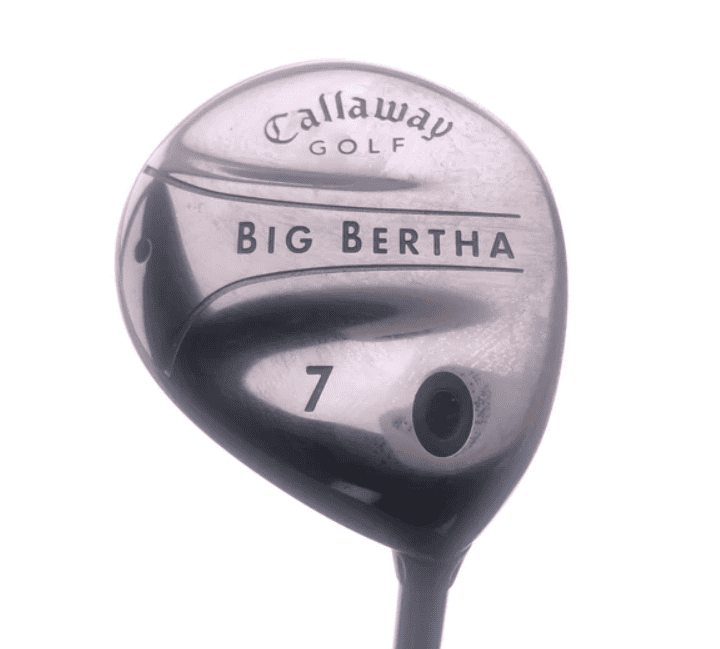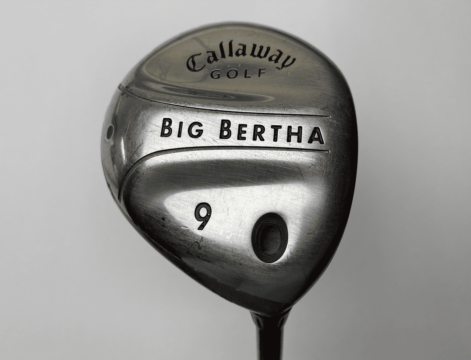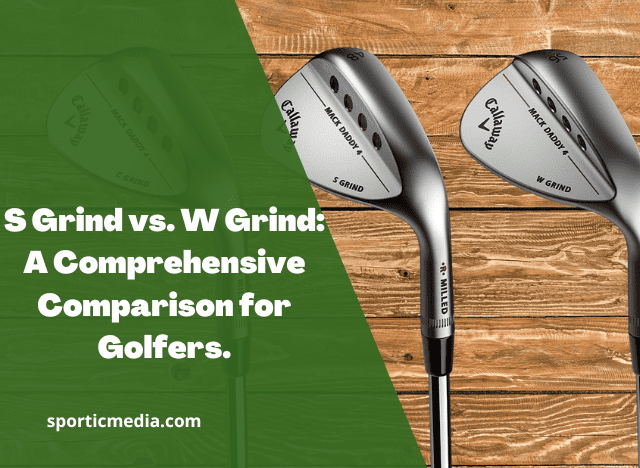Golf can sometimes feel like a puzzle, with various clubs offering different options for different situations. If you’ve ever wondered about the differences between a 7 wood and a 9 wood, and when to use each, you’re in the right place.
In this article, we’ll break down the key aspects of these clubs in simple language so you can make an informed decision on the course.
Table of Contents
What is a 7 Wood?

A 7 wood is a type of golf club designed to help you hit the ball over longer distances while maintaining control. It typically has a slightly shorter shaft than drivers or fairway woods, making it easier to handle. The loft angle of a 7 wood usually ranges between 20 to 24 degrees. The higher loft helps lift the ball off the ground, making it suitable for hitting shots from the fairway or rough.
Pros of Using a 7 Wood:
Distance with Control: The 7 wood strikes a balance between distance and control, making it ideal for shots where you need to cover a good amount of ground while maintaining accuracy.
Versatility: This club can be useful in various situations, from longer fairway shots to hitting from semi-rough areas.
Higher Launch: The higher loft helps get the ball airborne quickly, which can be beneficial in avoiding obstacles like bunkers and trees.
Cons of Using a 7 Wood:
Limited Short-Game Use: While the 7 wood can help you cover longer distances, it might not be the best choice for shorter shots around the green.
Skill Required: Like any golf club, the 7 wood requires practice to master. Hitting consistently accurate shots might take some time and effort.
7 Wood distance chart
Here’s a handy chart showcasing the average distances a 7 wood can cover for both men and women, categorized by skill level:
Short Hitter:
- Men: 150-170 yards
- Women: 120-140 yards
Mid Hitter:
- Men: 170-190 yards
- Women: 140-160 yards
Long Hitter:
- Men: 190-210 yards
- Women: 160-180 yards
Remember, these figures are just averages, and actual distances can vary due to several factors. Factors like your swing speed, the clubhead speed, club loft, and course conditions all play a role.
For instance, golfers with faster swing speeds generally achieve greater distances, and a lower club loft can lead to longer shots. Additionally, the nature of the course, whether it’s dry and hard or wet and soft, affects the ball’s travel. Consider these factors while using a 7 wood on the course.
What is a 9 Wood?
A 9 wood is another type of golf club, similar to the 7 wood but with a higher loft angle. The loft of a 9 wood usually falls between 24 to 28 degrees, making it even more suitable for shots that need to get off the ground quickly.
Pros of Using a 9 Wood:
- Extreme Forgiveness: The higher loft of the 9 wood helps create more backspin, making the ball stop more quickly upon landing. This can be particularly useful for shots onto the green.
- Ideal for Higher Handicaps: Golfers who are still developing their skills might find the 9 wood easier to use due to its forgiving nature.
- Great for Getting out of Trouble: When you find yourself in a tricky lie or challenging situation, the 9 wood’s loft can help you clear obstacles effectively.
Cons of Using a 9 Wood:
- Limited Distance: While the 9 wood offers excellent control, its distance might not be as impressive as the 7 wood or other lower lofted clubs.
- Specialized Use: The 9 wood is best suited for shots that require a high launch and controlled landing. It might not be as versatile as the 7 wood in certain situations.
9 Wood distance chart

Here’s a breakdown of the average distances a 9 wood can travel for men and women, categorized by skill level:
Short Hitter:
- Men: 100-120 yards
- Women: 80-100 yards
Mid Hitter:
- Men: 120-140 yards
- Women: 100-120 yards
Long Hitter:
- Men: 140-160 yards
- Women: 120-140 yards
Remember, these figures represent averages and real distances can vary due to multiple factors. Swing speed, clubhead speed, club loft, and course conditions all play roles.
For instance, a faster swing speed leads to greater distance, as does a lower club loft. Additionally, course conditions, like a hard versus soft course, influence the final shot distance. Keep these factors in mind when using a 9 wood on the course.
7 Wood vs 9 Wood Full Comparison
The 9 wood and 7 wood golf clubs differ primarily in loft, distance, and ease of use. The 9 wood has a higher loft, making it better for shots that need to go high and land softly, often used by players with slower swing speeds.
It’s shorter and easier to hit than the 7 wood but offers less distance. The 7 wood, with its lower loft, is better for longer shots, providing more distance and roll. It’s more challenging to hit due to its length but is versatile for various course situations.
Here’s a quick breakdown of the key differences between the 7 wood and the 9 wood:
| Feature9 Wood7 WoodLoftHigherLowerDistanceShorter rangeLonger rangeEase of UseEasier to hit, suitable for slower swingsHarder to hit, versatile for many shotsIdeal UseHigh, soft landing shotsLong shots with more rollSwing SpeedBeneficial for slower swingsSuitable for faster swingsShaft LengthShorterLonger |
|---|
Who should choose the 7 wood and 9 wood respectively?
The 7 wood is suitable for players who need longer distances and more roll, often preferred by those with faster swing speeds. It’s versatile for various shots and beneficial for mid to long-range shots.
The 9 wood, with its higher loft and shorter distance, is better for players with slower swing speeds or those who need shots with a high launch and soft landing. It’s easier to hit, making it a good choice for beginners or those struggling with long irons.
The Mizuno Pro 225 Vs TaylorMade P790; Complete Comparison
sporticmedia.com
Conclusion
In conclusion, choosing between a 7 wood and a 9 wood depends on your specific needs on the golf course. The 7 wood offers a balance of distance and control, while the 9 wood excels in providing a high launch and stopping power. By understanding their strengths and weaknesses, you can confidently select the right club for each situation, enhancing your overall golfing experience.
Discover the meticulous and expert-driven process behind our product reviews at Sportic Media. Our comprehensive guide, led by industry veterans, ensures you get the most reliable and detailed insights into golf equipment. Dive into our methodical approach by visiting How We Test Products at Sportic Media: A Comprehensive Guide
.







